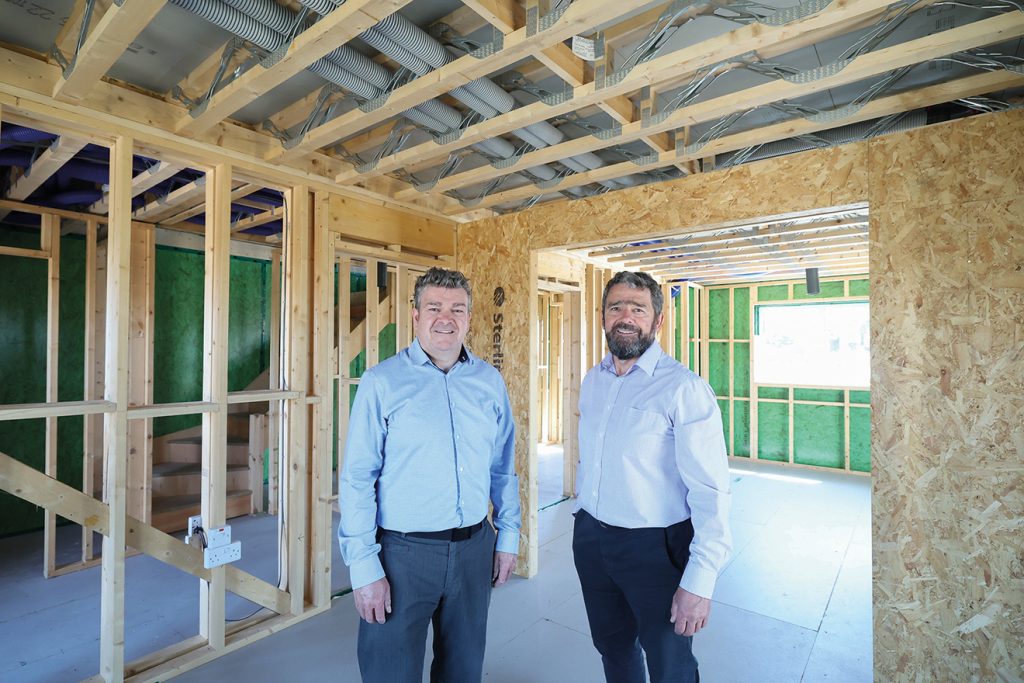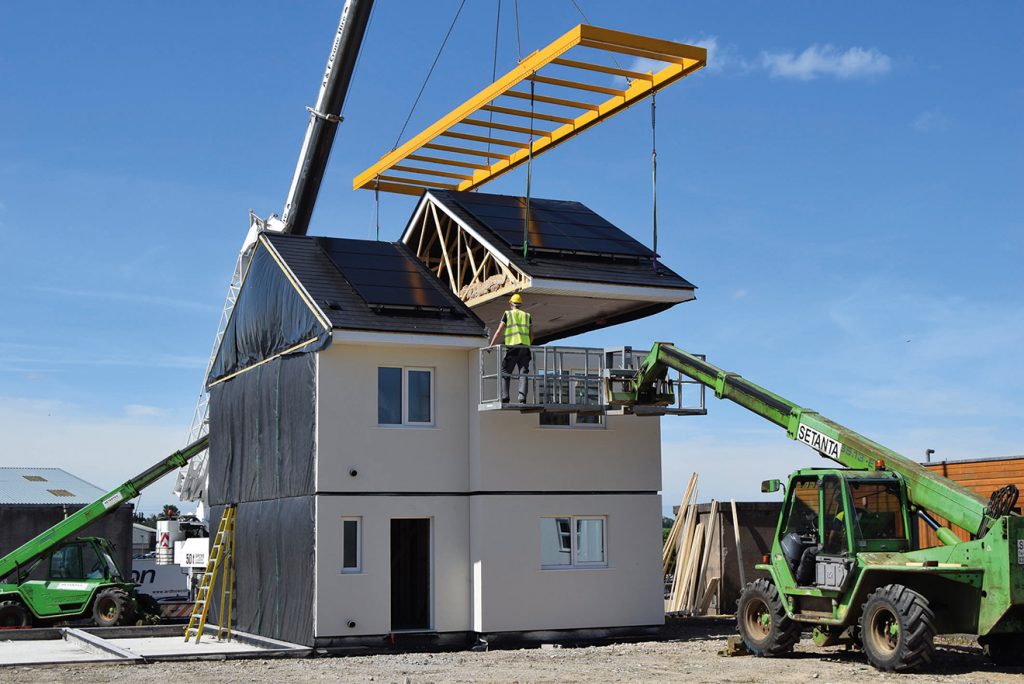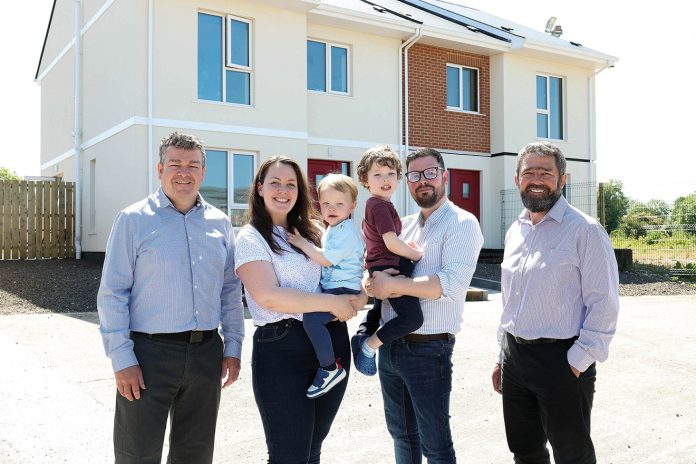Mid Ulster-based Setanta Construction is aiming to transform the social housing sector here by building high quality, cost-effective, Passive designed houses.
Directors Mark and Niall Gribbin, certified Passive house designer and specialist timber-frame builders have ambitious plans to bring Passive house to the mainstream by applying the ultra-energy efficient standard to affordable housing.
“With no permanent solution to the energy fuel and ongoing cost of living crisis, affordable housing needs to be better,” said Mark. “We’ve taken the initiative by designing and manufacturing a low-carbon, social housing prototype that can be quickly replicated and transformed into a long-term housing solution to help meet the needs of the sector.”
He continued, “There’s a preconception that building to energy-efficient standards significantly increases the construction cost of housing. Yes, there are obvious sources of expenditure that you need to account for when building to Passive House standards including heat recovery ventilation systems, added insulation and improved window and doors, but those component costs become economically attractive once the passive house is outperforming and far exceeding that of a conventional build.
“Based on the evidence of the houses that we have built, construction costs calculated between passive house projects and non-passive house vary less than 5%.
“We are confident that the differential costs could slowly diminish as the market gets more sophisticated through the implementation of improved production systems and the demand for passive house standards grow.”

In a sector that is notoriously resistant to change, energy efficiency has quickly become a key priority and the industry as a whole is advancing towards more sustainable and modern methods of construction, no doubt ‘fuelled’ by the ongoing energy fuel crises.
Niall said, “There is a growing number of large social and affordable Passive housing development schemes throughout the UK that are manufactured in factory and constructed offsite. Given the current housing and affordability crisis here, we urgently need comprehensive policymaking reforms that support essential new homes and promote sustainably constructed, affordable housing.
“Over the past few months we have been busy consulting with housing associations, architects, developers, planners and other industry stakeholders and they have definitely taken notice.
“It is quickly becoming clear that ultra-low energy, passive certified homes are very much in-line with social housing goals in terms of constructing homes that are rated highly energy efficient, comfortable, healthy and affordable for all.”
Renowned for building high quality, sustainably constructed buildings, Setanta Construction enlisted the support of industry professionals and passive house experts, including Tomas O’Leary, MD of MosArt and global passive house champion, who provided input regarding the design and construction of Setanta’s SoLow Passive Housing scheme. Looking at ways to reach optimal energy performance and cost effectiveness, Setanta also collaborated with Ulster University to conduct a live research monitoring study, which began in June and will continue for 12 months, analysing aspects such as internal heat gains, energy usage and actual savings for a family of four – believed to be the first of its kind live passive research study in Ireland.
 According to Niall Gribbin, “We are hopeful that the design decisions we have made combined with this unique study will further highlight the overall success of our SoLow Passive housing scheme and will help underpin its significance as a smart long-term investment for the social housing sector.”
According to Niall Gribbin, “We are hopeful that the design decisions we have made combined with this unique study will further highlight the overall success of our SoLow Passive housing scheme and will help underpin its significance as a smart long-term investment for the social housing sector.”
Setanta took inspiration for SoLow from their offsite work carried out for major construction projects including Claridge’s Hotel in London and The Richard Rogers Art Gallery in France, where large building components were built at their factory in Magherafelt, transported to site locations and assembled in a matter of weeks.
Mark said, “The value proposition of offsite construction is gathering pace with the greatest potential for growth in the housing and commercial sectors. Factors fuelling this rise include skilled labour shortages within the industry, advanced off-site technologies and a push for more sustainable construction methods.
“Our versatile and cost-effective off-site method of construction allows us to deliver the highest quality energy-efficient homes while minimising overall construction time and costs. SoLow can be built in approximately two weeks in our factory and assembled onsite in a few hours, with plans underway for a new 30,000 sq ft factory enabling us to increase productivity to one fully completed house every day.”








